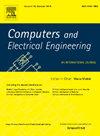无池快速分割网络(PFRS-Net)检测人类囊胚室用于胚胎评估
IF 4.9
3区 计算机科学
Q1 COMPUTER SCIENCE, HARDWARE & ARCHITECTURE
引用次数: 0
摘要
辅助生殖技术已经成为解决人类不孕症的一种日益流行的解决方案,主要是通过体外受精(IVF)。体外受精是一个复杂的过程,卵子和精子在人体外结合。这发生在一个受控的、专门的实验室环境中,在胚胎移植到子宫之前,支持和鼓励胚胎的生长。试管婴儿过程是在实验室环境中仔细监测和调节的,直到胚胎发育并进入囊胚阶段。体外受精(IVF)的标准程序包括从一批在受控条件下培养的囊胚中移植一个或两个囊胚。对这些囊胚进行了详细的形态学分析,评估了它们的不同成分,包括滋养外胚层(TE)、透明带(ZP)、内细胞团(ICM)和囊胚层(BL),使用人工显微镜技术。尽管深度学习已经成功地应用于各种医学诊断和分析应用,但将其集成到人类囊胚的自动化形态学分析中仍然面临一些障碍。当前的方法经常表现出不准确性,需要大量的预处理以及昂贵的计算体系结构。因此,需要进一步研究以提高该领域深度学习技术的准确性和效率,以充分发挥其在辅助生殖技术中的潜力。为了应对这一挑战,我们引入了无池快速分割网络(PFRS-Net),该网络专门用于在不依赖池操作的情况下有效识别人类囊胚的区室。该网络利用快速卷积块(RCB)模块来实现准确的检测。RCB模块专门设计用于捕获具有计算效率的有价值的深层特征。然后使用Swift Decoder块使用几层将特征映射上采样到其原始大小。这种特殊的设计有助于减少可训练参数的数量,同时保持较高的分割精度,并使用特征增强块(FEB)恢复丢失的空间信息。我们提出的PFRS-Net在不进行图像预处理和仅消耗110万个可训练参数的情况下准确检测囊胚腔室。该方法使用可公开访问的人类囊胚图像数据集进行训练和测试。实验结果表明,该方法在检测囊胚成分方面具有良好的分割性能,这对胚胎研究和分析至关重要。本文章由计算机程序翻译,如有差异,请以英文原文为准。
Pool Free Rapid Segmentation Network (PFRS-Net) to detect human blastocyst compartments for embryonic assessment
Assisted reproductive technology has become an increasingly popular solution to address infertility in humans, primarily by in vitro fertilization (IVF). IVF is a complex process where eggs and sperm are combined outside the human body. This occurs in a controlled, specialized laboratory setting that supports and encourages the growth of embryos before they are transferred to the uterus. The IVF process is carefully monitored and regulated within a laboratory environment until the embryos develop and progress to the blastocyst stage. The standard procedure for in vitro fertilization (IVF) involves transferring one or two blastocysts from a batch that has been developed under controlled conditions. A detailed morphological analysis of these blastocysts is performed, assessing their distinct components, including the trophectoderm (TE), zona pellucida (ZP), inner cell mass (ICM), and blastocoel (BL), using manual microscopic techniques. Although deep learning has been successfully utilized in various medical diagnostic and analytical applications, its integration for automating the morphological analysis of human blastocysts continues to face several obstacles. Current methodologies often exhibit inaccuracies and necessitate considerable preprocessing along with expensive computational architectures. As a result, further research is needed to improve the accuracy and efficiency of deep learning techniques in this field to enable their full potential in assisted reproductive technology. To address this challenge, we introduce the Pool Free Rapid Segmentation Network (PFRS-Net), which is specifically developed to effectively identify the compartments of human blastocysts without relying on pooling operations. The network utilizes rapid convolutional block (RCB) modules to achieve accurate detection. The RCB module is specifically designed to capture valuable deep features with computational efficiency. The Swift Decoder block is then used to up-sample the feature maps to their original size using a few layers. This specialized design helps to reduce the number of trainable parameters while maintaining high segmentation accuracy and recovering the lost spatial information using a feature enhancement block (FEB). Our proposed PFRS-Net accurately detects the blastocyst compartments without preprocessing the image and consuming 1.1 million trainable parameters only. This method is trained and tested using a publicly accessible dataset of human blastocyst images. The experimental outcomes demonstrate superior segmentation performance in detecting blastocyst components, which is vital for embryonic research and analysis.
求助全文
通过发布文献求助,成功后即可免费获取论文全文。
去求助
来源期刊

Computers & Electrical Engineering
工程技术-工程:电子与电气
CiteScore
9.20
自引率
7.00%
发文量
661
审稿时长
47 days
期刊介绍:
The impact of computers has nowhere been more revolutionary than in electrical engineering. The design, analysis, and operation of electrical and electronic systems are now dominated by computers, a transformation that has been motivated by the natural ease of interface between computers and electrical systems, and the promise of spectacular improvements in speed and efficiency.
Published since 1973, Computers & Electrical Engineering provides rapid publication of topical research into the integration of computer technology and computational techniques with electrical and electronic systems. The journal publishes papers featuring novel implementations of computers and computational techniques in areas like signal and image processing, high-performance computing, parallel processing, and communications. Special attention will be paid to papers describing innovative architectures, algorithms, and software tools.
 求助内容:
求助内容: 应助结果提醒方式:
应助结果提醒方式:


